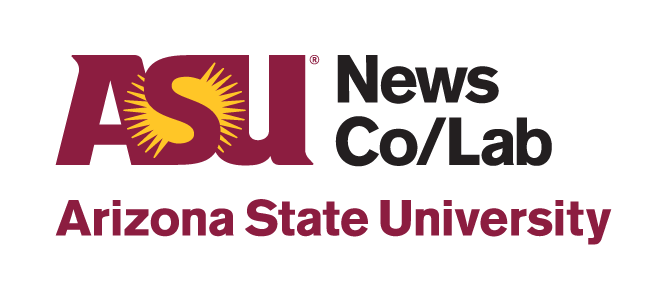Accessing, analyzing and acting on news (and elections)

News Co/Lab Research Aid Molly Stellino reflects on links between media literacy and young voters.
During this past semester at the News Co/Lab, I’ve looked at a substantial amount of research about media literacy. But when I wasn’t in the lab I was usually investigating young voters in this year’s midterm election, a surprisingly similar topic, for my Depth Reporting class at the Cronkite School.
The overlap between media literacy and young voters may not be clear at first. But after months of researching that sometimes left me in a daze of “information overload,” the common denominator became evident. Education plays an important role in both.
The News Co/Lab’s most recent study with the Center for Media Engagement found that college graduates spot fake headlines more successfully than those without college degrees. Sixty-eight percent of college educated people were able to identify a fake news headline, while 57 percent of those with less than a college degree identified the fake headlines.
Education increases media literacy, but there is still room to improve. A third of college graduates did not identify the fake headline. This is why the Co/Lab advocates for embedding media literacy lessons into different school subjects.
The internet bombards people with mass amounts of real and fake information in the many forms of tweets, advertisements, notifications and YouTube videos. Because of this, media literacy skills for accessing, analyzing and acting on news and information are as imperative as basic mathematics or social studies, and should be taught in the classroom from a young age to help prevent people from being mislead by misinformation.
The 40 high school and college students I interviewed while reporting on youth civic engagement frequently mentioned education. The general consensus? The young people I talked to said their peers don’t vote because they have trouble accessing information to form their decisions. They also said some students don’t vote because they were mislead to believe that their vote doesn’t matter.
According to the Center for Information & Research on Civic Learning and Engagement (CIRCLE), the voter turnout rate for people between the ages of 18 and 29 in this year’s election was 31 percent, a 10-percent increase from the previous midterm election. The increase is significant, but shows less than one-third of the age group voted.

Jimmy Arwoood Illustration by Connor Wodynski
- One 23-year-old activist I spoke with, Jimmy Arwood, attributed part of this low turnout problem to the lack of civic education in schools. He said our schools can do a better job of teaching the importance of civics.
“When I was going through school here in Arizona, I wasn’t given any education on voting,” he said. “If we just have an education system that teaches government and not how that government comes to be, then we’re not doing enough to teach kids why this is important.”
A 2010 study from the Massachusetts Institute of Technology confirmed the longstanding idea that the “effect of education on the propensity to vote is positive.” But the correlation between education level and likeliness to vote is weaker than academics originally thought.
Education in general promotes civic engagement. Arwood and the youth I interviewed think if basic education included civics, the tendency to vote would be much higher.
It’s hard to expect anyone to vote when they’ve never been taught why it matters, never mind how to find election-related news and information. And it’s hard to expect people to spot fake headlines when they’ve never received media literacy training. But can we assume the existence of a relationship between media literacy and civic engagement?
Although difficult to measure this relationship, a 2010 study conducted by researchers from Mills College, the College of Charleston and UC Santa Barbara concluded that a positive correlation exists.
When youth seek out information and participate in online discussions — two important components of media literacy — civic acts like voting increase, the study’s authors explained. Media literacy may “expand the degree that the youth engage in civic and political activities online.”
The prevalence of political misinformation on social media can make finding accurate information difficult. But when students can find reputable political information, they are more likely to feel informed enough to vote and understand the importance of voting.
A few organizations are working in this sector. 20×22, a campaign sponsored by The LAMP and CIRCLE, works to build media literacy skills that foster civic engagement. And The News Literacy Project found that after students completed its online curriculum Checkology two-thirds of them said they were more likely to vote.
Young people’s poor voter turnout and inability to distinguish real from fake news repeatedly legitimizes the need for civic and media literacy education in schools. As Arwood put it, “We all do better when we all do better. When kids are successful in school, they’re gonna live successful lives. And that benefits all of us.”
